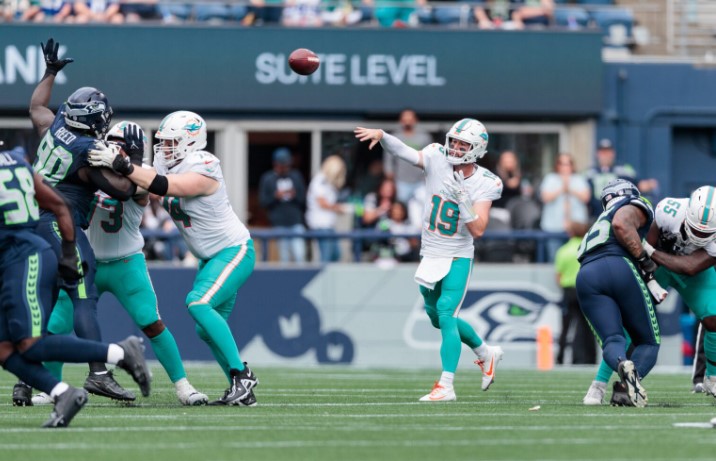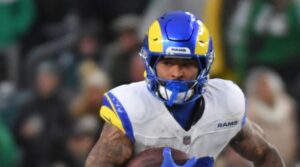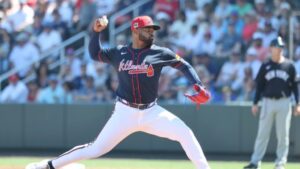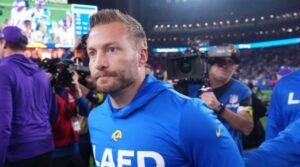
The Miami Dolphins’ quarterbacks are dealing with a string of injuries, making the wildcat formation a creative solution to help stabilize the team’s sinking season. After entering the offseason with Super Bowl aspirations, the Dolphins are now tied with the New England Patriots at the bottom of the AFC East standings (1-2).
The injury woes began with star quarterback Tua Tagovailoa, who has suffered multiple concussions, sparking retirement rumors and completely stalling the Dolphins’ offensive momentum. Meanwhile, a poorly executed preseason quarterback competition has left Skylar Thompson, the current starter, struggling to move the ball effectively.
Thompson’s dismal 5.7 yards per attempt in two games has sidelined key playmakers like Tyreek Hill and Jaylen Waddle, while head coach Mike McDaniel’s previously praised offensive system is now facing scrutiny. The recent signing of former Pro Bowl quarterback Tyler Huntley provides some hope, but the team is in urgent need of solutions.
This is where the wildcat formation, which the Dolphins popularized in the late 2000s with Ronnie Brown and Ricky Williams, comes into play. The wildcat features a running back taking the snap in place of a traditional quarterback, utilizing an option-heavy running attack to surprise defenses. The unconventional setup allows for offensive creativity without relying heavily on the quarterback. A famous example of this formation’s success was the Dolphins’ 2008 victory over the New England Patriots, where they used the wildcat to great effect.
In the current situation, a return to the wildcat formation could ease the burden on Miami’s struggling quarterbacks. Thompson has looked lost on the field, Huntley has had little time to learn McDaniel’s complex playbook, and backup quarterback Tim Boyle has a dismal record, with just four touchdowns and 12 interceptions over his six-year career. As Tua takes time to recover, the Dolphins need a strategy that can revive their offensive rhythm.
Implementing the wildcat for a few select plays would diversify Miami’s attack and catch opposing defenses off guard. Imagine a backfield featuring dynamic runners like De’Von Achane, Raheem Mostert, and Jeff Wilson Jr., while Hill and Waddle stretch the field with their elite speed. McDaniel could orchestrate option plays, reverses, or simply use the formation to create space and open passing lanes for Huntley or Thompson. At the very least, defenses would be forced to focus more on stopping the run, potentially creating opportunities for big plays in the passing game.
While Achane and Mostert have no passing attempts in their NFL careers, the wildcat shouldn’t be relied on as a long-term fix. However, it offers a chance for the Dolphins to gain offensive traction and potentially turn their season around as they await Tua’s return.





